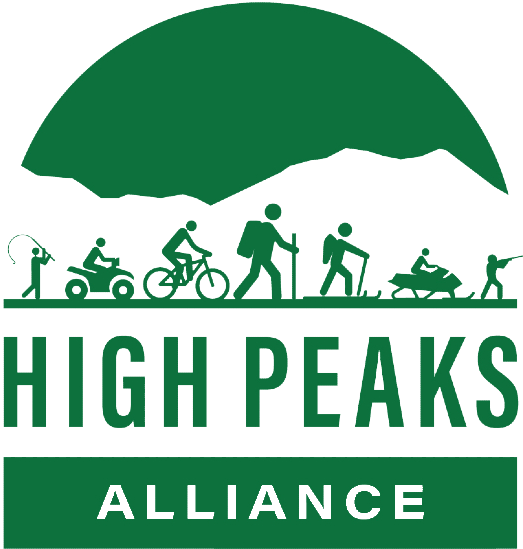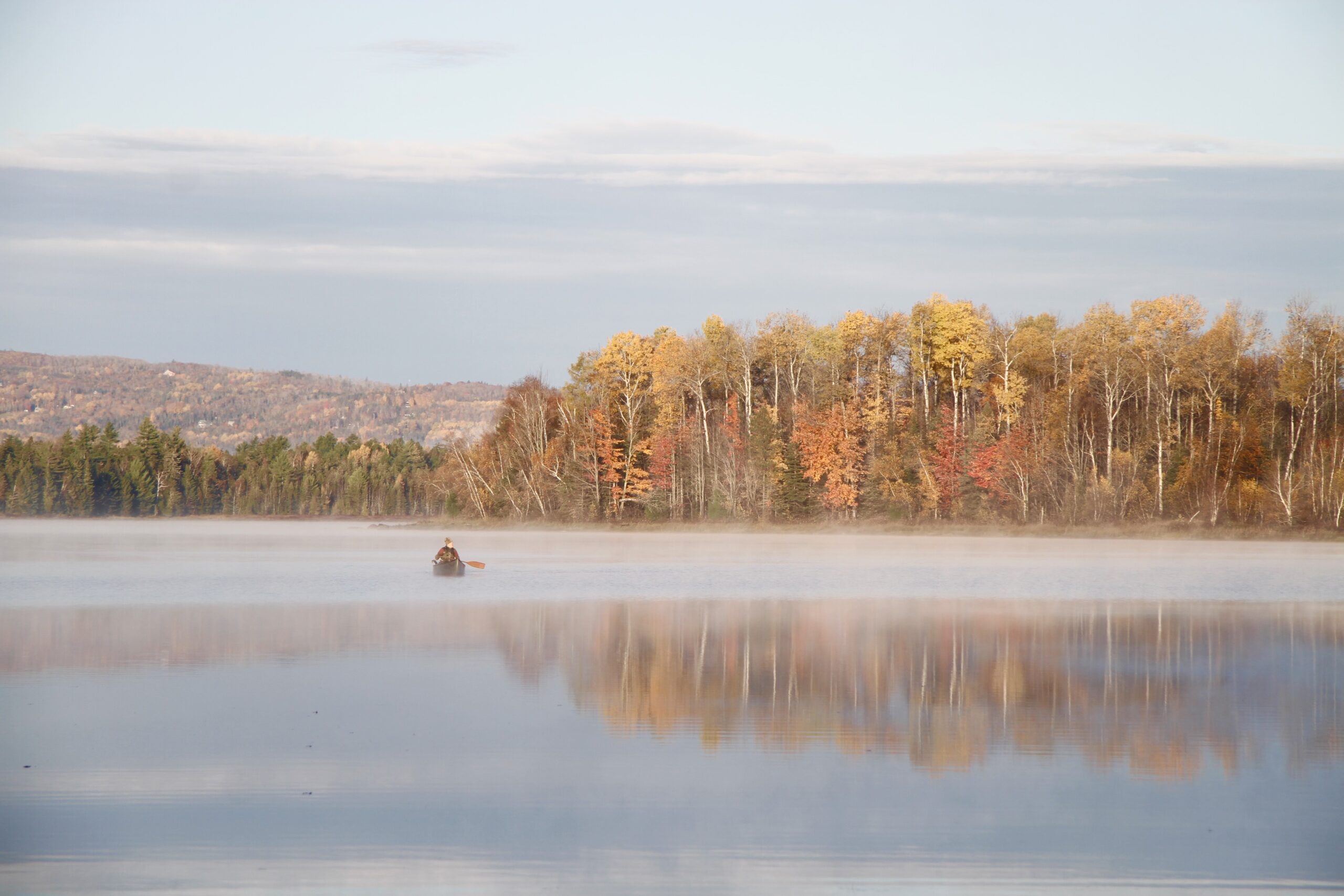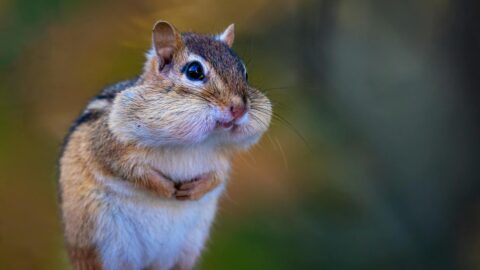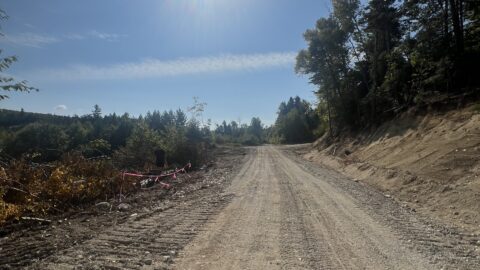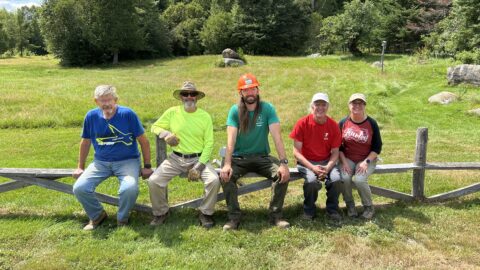Meet Dr. Alex Fish, Maine Dept. of Inland Fisheries and Wildlife
Recently, we had the pleasure of hearing Dr. Alex Fish speak at the Rangeley Region Guides and Sportsman’s Association Potluck about his vital work studying at-risk species in the High Peaks region. Inspired by his talk, our intern Bridget, curious about how Alex’s work intersects with ours at the High Peaks Alliance and her own future in conservation, eagerly took the lead on this interview.
From rare songbirds nesting at mountain summits to little-known invertebrates living along remote riverbanks, the High Peaks region hosts some of Maine’s most distinctive and vulnerable species. Dr. Fish has devoted his career to understanding these creatures and the habitats they rely on. In this conversation, he shares his first transformative experiences in the High Peaks, discusses the unique challenges facing endangered and threatened species, and highlights the powerful role local communities and land trusts can play in their protection.
Enjoy the conversation.
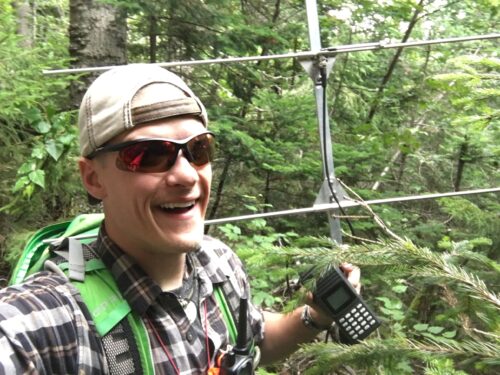
From Student to Steward
What’s a memorable moment in the High Peaks that made you fall in love with this place?
It was the first time I came out here. When I was in grad school at the University of Maine, one of my co-workers had a field project based in this area. She was working with Bicknell’s thrush, which is a species of songbird that’s reliant on high peaks and dense spruce-fir forests near the summit.
That was my first experience, living at a remote base camp in the mountains, watching the clouds come in. It ingrained in me what I think of as the High Peaks- hiking up every day into that area and seeing a very charismatic species that’s here.
What brought you to working with MDIFW, and how did you choose to specialize in endangered species?
I always saw myself going to school for natural resources and wildlife ecology to likely pursue a career with a state agency. I came to Maine for grad school, and there I was working with migratory birds at study sites from Southern Canada to Florida. That was a different experience for me, where most of my prior work had been at a single site. We put GPS transmitters on woodcock, accurate to within a few meters, so that we could track their migratory movements and stopover site use. They have the same accuracy as a cell phone, but pick up anywhere from Maine to birds overwintering on the Florida-Alabama line.
Through most of my career, I’ve had a lot of varied interests, which have taken me on jobs across most of the US. I’ve worked with game species as well, but a lot of my work has been with at-risk species. “At-risk” encompasses species that are endangered, threatened, of special concern, and species of greatest conservation need. Experiences with these varied environments, different species, and their life histories played well in getting into this role.
Rare Peaks, Rare Creatures
For those of us who hike or explore here, what makes the High Peaks’ ecology so unique in Maine?
The High Peaks Region is so important because of the high mountains it’s named after. Because it’s an uncommon habitat type in the state, there are a lot of unique species that are associated with it. Bicknell’s thrush is a great example, but also the Blackpoll Warbler, which was recently added as Threatened to the Maine Endangered Species Act. We’ve seen a range retraction for this species, where birds that used to commonly breed in Downeast Maine and along the coast have retracted up to mountainous areas in the High Peaks Region and other places further North towards Baxter.
What rare or at‑risk species might people be surprised to learn live right here in the High Peaks?
Something in the region we might not think of right away is the cobblestone tiger beetle. There are one or two stretches of river where the species has been documented in Maine, because it requires ice scour and annual flooding that coincides in the spring. These events denude some of the cobble whitewashes of vegetation, keeping them exposed. Other parts of Maine have had a lot of dams and water control structures installed, historically for controlling water flow to float lumber down the rivers. One of the impacts of that kind of water level manipulation is that these scour habitats are hard to find in Maine, or at least in their more historic condition. I mention this because our listed invertebrates don’t get enough attention, yet we have a unique stewardship responsibility.
With more people visiting the High Peaks, what’s your vision for keeping recreation fun while protecting wildlife?
Coming out of COVID, we’ve seen an increased interest in outdoor recreation. We have more people coming to Maine who want to spend time outside, and it’s the best problem to have. Because people want to be here, they recognize the value of Maine’s resources, so the concern becomes trying not to love these resources to death.
That’s where we have to think creatively about how we harness that same energy and enthusiasm to build in stewardship behaviors. Every person I see exploring, hiking, and recreating outside has that value and the potential to be a strong ally in future conservation. We just need to think about how to design recreation infrastructure that supports this level of use, like restrooms people can use instead of creating disturbances off-trail.
What are the biggest threats to Maine’s rare species? How can everyday people help turn things around?
There are many challenges because we’re living in one of the six mass extinction events in Earth’s history. Some of these threats, such as climate change, can have dire impacts on species. Especially those that are already at elevated risk, since they’re more likely to be reliant on rare habitats, such as mountain peaks. There’s not a whole lot of elevation that species can migrate up until they just get pushed off the top of the mountain.
There are other threats to endangered or threatened species as well, such as land development. When we talk about development, we mean conversion from a natural state into housing or industrial areas, but also fragmentation. There’s been quite a bit of research in the southern Appalachians, where people want to build neighborhoods and roads close to nature. Impacts in the first year of development might not result in a huge loss of biodiversity, but five or ten years later, you see pretty drastic losses. Avian communities will change from species that need closed canopy conditions to species such as robins that favor broken-up and fragmented landscapes.
How do we address these challenges… I think that is where the power of local-scale conservation comes into play. Identifying high-priority resources or large, undeveloped habitats and subsequently advocating for conservation or protection of these areas is very important. Ideally, these local-level actions roll up into larger landscapes with multiple communities taking on that effort.
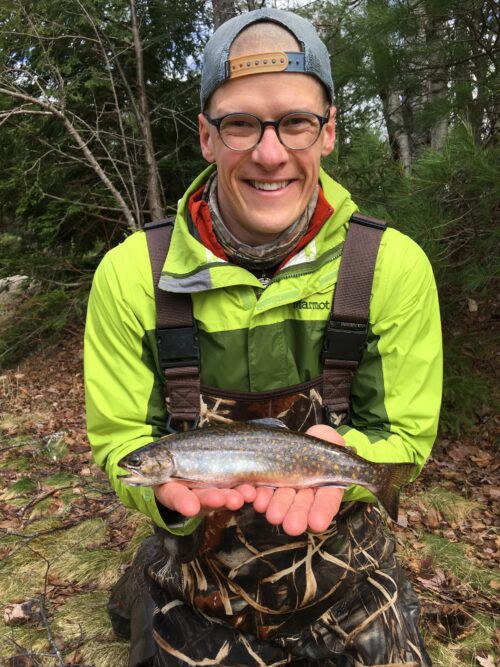
Conservation Takes a Village
Can you share a success story where landowners, local groups, or state agencies teamed up to protect wildlife or habitat?
It’s important to recognize that the majority of Maine land is privately owned, which is different from out west, where federal land can be the majority of the state. Something the department is focused on is trying to engage large private landowners to share information about where rare species and rare habitats are, so we can help them adopt best management practices.
A good example is the wood turtle. Wood turtles throughout most of their range are doing poorly. Maine is the species stronghold, so there’s a big stewardship responsibility for the state. Working with foresters and for land management companies to institute riparian buffers can help prevent injury to individuals during harvest, but also helps to reduce runoff and maintain water quality, thereby conserving habitat. Wood turtles are of special concern in Maine, which relies on proactive voluntary conservation actions. When we get to endangered and threatened species, that’s where you have more regulatory policies, which are designed to protect the last few places the species occurs. Conceptually, if we focus conservation efforts on species that are declining using a proactive approach, that’s generally a better way of doing conservation work. Rather than waiting until species are on the brink.
We’ve been coordinating within the department and working very closely with the Department of Marine Resources and the Maine Natural Areas Program to do a comprehensive Maine Wildlife Action Plan. It’s a cross-agency effort to identify what our most at-risk or declining species are, to label them as species of greatest conservation need, and then target those proactive efforts on those species in the hope that we can prevent species listing at the state or federal level.
How can the High Peaks Alliance and other local organizations best lend a hand in your work?
Organizations, like yours, with a strong, dedicated community… I could envision a role of amplifying at-risk wildlife information that the department colligates. Hopefully, encompassing where rare species are, what type of habitats they rely on, and what collective actions we can take to protect them. Hopefully, we can provide resources that support local conservation efforts to take that information, build it into their work plans, and get people engaged. I see a lot of similar efforts get people passionate and excited about nature and wild places.
One of my takeaway points is that the world is constantly changing, and conservation is constantly changing. When we talk about at-risk species protections and at-risk habitat protections, we need to maintain an open mindset to where those opportunities are and be able to adapt to any issue that arises. We need to be forward-thinking to ensure people have access to these resources now and for generations to come.
When we’re out hiking, camping, or riding ATVs, what simple things can we do to help protect the wildlife we love?
In Maine, at least in my experience, people are pretty good at following marked trails. Marked hiking trails are great because generally they are built in areas that minimize impact to wildlife and their habitat. Secondly, I would add that taking photographs rather than collecting plants or animals is also a great way to save memories and leave no trace.
The same thing goes for ATVs, too. There are situations we’ve seen where people will go off-roading, or drive through sensitive areas, and it can cause huge destruction… think of driving through a bog and other wetland and leaving huge ruts. Those impacts can take years to recover… so stay on marked trails, stay safe, and enjoy the trail.
For families, teachers, or anyone wanting to spark a love for nature in kids, what fun and easy ways do you recommend to get them outside and curious?
One of the challenges that I hear from parents and grandparents is about difficulty getting kids off of the iPad or phone long enough to get outside… kids just like us can be drawn to our electronic gadgets. If that’s the case, how about downloading apps like Seek or Merlin ID, which are freely available and can be used to identify plants/animals or even bird calls! I see a tremendous opportunity to use the ‘electronic habit’ to learn about the surrounding natural world. At the very least, it can be a gateway to begin learning about plants and animals that are around you, rather than flipping through a 300-page field guide, which is partly how I learned. And always let kids’ interests drive your outdoor experience – you might want to go for the 10-mile hike, but maybe a mile walk through the city forest is a good place to start. Building these learning experiences into family activity, be creative and make them something special. Build good memories.
Both Seek and Merlin ID let you upload your observations to digital data libraries, such as iNaturalist or eBird… thereby archiving the species you observed. The Department frequently downloads this information to better understand species distribution. This information is very important for invertebrate species (e.g., bees, butterflies, dragonflies) conservation tools, as we can easily summarize what species are in Maine, understand where they are, and how common they are. This basic knowledge helps to inform conservation efforts and help us determine where to focus our conservation funding.
📸 Alex in the field in the High Peaks.
Last Thoughts
Hearing Dr. Fish talk about Bicknell’s thrush, wood turtles, and even the overlooked cobblestone tiger beetle reminds us just how extraordinary and fragile the High Peaks’ natural heritage is. His call for proactive, community-driven stewardship mirrors our mission at the High Peaks Alliance: to ensure that people can responsibly enjoy these lands while safeguarding them for future generations.
Whether it’s staying on marked trails, supporting conservation-minded land management, or sharing your wildlife observations through citizen science apps, every action adds up. As Dr. Fish notes, the world is changing, and so must our approach to conservation. By working together across agencies, organizations, and communities, we can keep the High Peaks’ wild beauty thriving now and forever.
